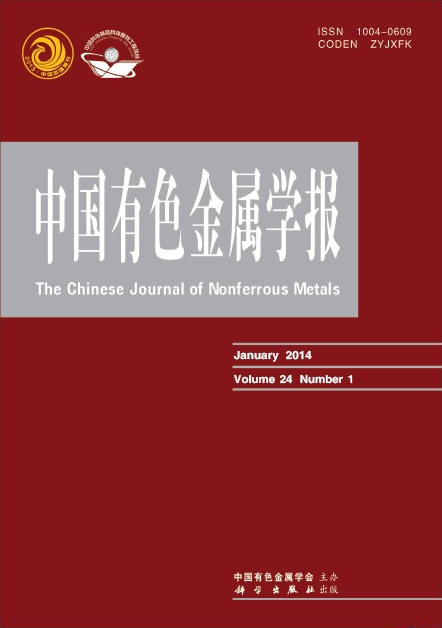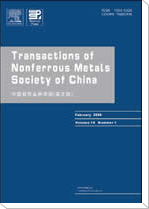(中南大学 材料科学与工程学院,长沙 410083)
摘 要: 对镁合金热轧板材在不同温度进行退火处理,采用恒电流扫描法、动电位极化扫描法和浸泡法研究不同退火温度对其在3.5%(质量分数)NaCl中的电化学性能和自腐蚀性能的影响;采用光学显微镜、扫描电镜和X射线衍射仪对其显微组织和腐蚀形貌进行观察。结果表明:镁合金阳极板材在退火过程中发生静态再结晶,经250 ℃、300 ℃退火1 h,合金板材发生完全再结晶;经300 ℃退火1 h后,镁合金阳极板材的电化学活性最好,放电稳定电位达−1.654 V(vs SCE),但其耐蚀性能最差,腐蚀电流密度为180.38 μA/cm2。
关键字: 镁合金阳极;热轧;退火;微观组织;电化学性能
(School of Materials Science and Engineering, Central South University, Changsha 410083, China)
Abstract:Annealing treatment was carried out on the hot-rolled magnesium alloy anode sheet at different temperatures. The effects of different annealing temperatures on the electrochemical and self-corrosion behavior of magnesium alloy anode were investigated by galvanostatic tests, potentiodynamic plorization and immersion tests in 3.5% (mass fraction) NaCl. The microstructure and the corroded surface of the experimental specimens were observed by optical microscopy, scanning electron microscopy and X-ray diffractometry. The results show that static recrystallization occurs during the annealing treatment, the magnesium alloy sheet shows completely recrystallized microstructure after being annealed at 250 and 300 ℃ for 1 h. After being annealed 300 ℃ for 1 h, the magnesium alloy sheet has the best electrochemical activity, whose discharge electrode potential can be up to −1.654 V(vs SCE), but its corrosion resistance is the worst and the corrosion current density is 180.38 μA/cm2.
Key words: magnesium alloy anode; hot rolling; annealing; microstructure; electrochemical property


